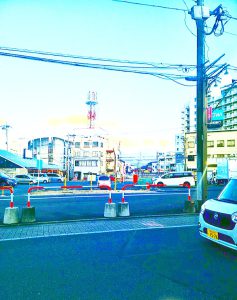建設的提言:都市と地方の相互補完的発展による持続可能な地域創生
- 2025.02.06
- 月刊芳美
建設的提言:都市と地方の相互補完的発展による持続可能な地域創生
提言の背景
現代社会において、都市部の過密化と地方の過疎化が深刻な課題となっています。この現象は、単なる人口移動の問題にとどまらず、地域経済、文化、社会構造の均衡を欠いた形で進行しています。その結果、地方では活力の喪失と経済の停滞が顕著となり、都市では過密化によるストレスと生活コストの高騰が問題となっています。この状況を打破するためには、都市と地方が相互に補完し合い、共生する形で発展する新たな枠組みを構築する必要があります。
提案するアプローチ
都市と地方の相互補完的発展を実現するためには、以下の3つの核心的要素を取り入れることが求められます。
双方向的な生活スタイルの推進
都市と地方は、もはや一方通行の流れではなく、相互に流れが交錯する「双方向的な生活モデル」を推進すべきです。都市部の住民は、過疎地域における自然の豊かさや静けさ、そしてその土地独自の文化に触れることによって、ストレス解消や精神的な充足感を得るとともに、地方の人々には都会の持つ新しい刺激や情報を享受する機会を提供します。これにより、都市生活の過密感と地方の過疎化の双方に対して、新たな活力と可能性をもたらすことができます。
地域間ネットワークの構築と地域経済の双方向活性化
都市と地方をつなぐためには、単なる移住促進策だけでなく、経済的なネットワークの強化が不可欠です。具体的には、都市部の消費市場と地方の生産活動を直結させる仕組みを作り、地方産品やサービスが都市での需要に応える形で市場に流通することを推進します。さらに、地方で生まれる独自の技術やアイデアを都市部に持ち込み、都市部のビジネスモデルに新たな価値を加えるイノベーションの波及効果も期待できます。こうした相互作用が、地域経済の活性化を促し、地方の自立的発展を支援することとなります。
文化と教育を核とした人的交流の推進
地方と都市部が共に発展するためには、人材交流や文化的な共有を重要な柱として位置付けるべきです。具体的には、都市部の教育機関と地方の文化施設、または企業との連携を深め、地域資源を最大限に活用した共同プログラム(例えば、文化交流、インターンシップ、産学連携など)を通じて、地域の特色を活かした教育システムを作り上げます。この交流を通じて、相互理解を深め、双方の文化や価値観を尊重し合いながら、共通の目標に向かって協力する基盤を築きます。
期待される効果
このような「都市と地方の相互補完的発展」のアプローチが実現すれば、次のような効果が期待できます:
地方経済の持続的成長
地方の特産品やサービスを都市部の消費市場へと橋渡しし、地域内での経済循環を促進します。都市と地方の経済的相互依存関係が強化され、過疎地域の経済活動が活発化します。
精神的・社会的な豊かさの向上
都市部の住民が地方で過ごすことで、自然との触れ合いやゆったりとした生活リズムを享受し、心身のリフレッシュが可能となります。地方の人々は、都市のダイナミズムや情報の流れを感じ取ることができ、社会的な活力を再生することができます。
地域間の格差縮小と文化的多様性の尊重
都市と地方の相互交流を深めることで、地域間格差が縮小し、文化的な多様性が尊重され、地域ごとの個性や特色を活かした持続可能な社会が実現します。
結論
都市と地方は、単に対立的な存在ではなく、相互に補完し合うべき関係にあることを再認識する必要があります。都市部の高度なインフラや情報、文化を地方に還元し、地方の豊かな自然や文化を都市部に持ち込むことで、双方向的な成長と持続可能な地域創生を実現できます。この提案が、都市と地方の共生と相互発展の新たなモデルを創造し、未来の社会に向けて革新的な転換を促す一助となることを期待しています。
💕
Constructive recommendations: sustainable regional creation through complementary development of urban and rural areas
Background to the recommendationsIn
contemporary society, overcrowding in urban areas and depopulation in rural areas have become serious issues. This phenomenon is not merely a matter of population movement, but is also progressing in ways that lack balance in the local economy, culture and social structure. As a result, rural areas are experiencing a noticeable loss of vitality and economic stagnation, while cities are facing stress and rising living costs due to overcrowding. In order to overcome this situation, it is necessary to build a new framework in which cities and regions complement each other and develop in a symbiotic manner.
Proposed approachTo
realise complementary urban and rural development, the following three core elements must be incorporated
Promotion of
a bi-directional lifestyleUrban and rural areas should no longer be one-way flows, but should promote a ‘bi-directional lifestyle model’ where the flows intersect with each other. Urban residents can gain stress relief and a sense of spiritual fulfilment by experiencing the richness and tranquillity of nature and the unique local culture in depopulated areas, while providing rural people with the opportunity to enjoy the new stimulation and information that cities have to offer. This can bring new vitality and possibilities to both the overcrowding of urban life and the depopulation of rural areas.
Building inter-regional networks and two-way activation of local economies
In order to link urban and rural areas, it is essential to strengthen economic networks, not just migration promotion measures. Specifically, a mechanism can be created to directly link urban consumer markets with local production activities, promoting the distribution of local products and services to the market in a way that meets demand in the cities. Furthermore, a ripple effect of innovation can be expected, whereby unique technologies and ideas generated in rural areas are brought to urban areas, adding new value to urban business models. Such interactions will stimulate local economies and support the independent development of rural areas.
Promoting human exchange with culture and education at the coreIn
order for rural and urban areas to develop together, human resource exchange and cultural sharing should be positioned as important pillars. Specifically, urban educational institutions and local cultural institutions or businesses should deepen their cooperation and create an education system that makes the most of regional characteristics through joint programmes (e.g. cultural exchange, internships, industry-academia collaboration, etc.) that make the most of regional resources. Through this exchange, mutual understanding is deepened and a foundation is laid for cooperation towards common goals while respecting each other’s culture and values.
Expected benefits
If this approach of ‘complementary development between urban and rural areas’ is realised, the following benefits can be expected:
sustainable growth of the local economyBridge
local specialities and services to the urban consumer market and promote economic circulation within the region. Economic interdependence between urban and rural areas is strengthened and economic activity in underdeveloped areas is stimulated.
Increased mental and social enrichment
When urban residents spend time in rural areas, they enjoy contact with nature and a relaxed rhythm of life, enabling them to refresh their minds and bodies. People in rural areas can feel the dynamism of cities and the flow of information, and regenerate their social vitality.
Reduced disparities between regions and respect for cultural diversityIncreased
interaction between cities and regions will reduce disparities between regions, respect cultural diversity and create a sustainable society that makes the most of the individuality and characteristics of each region.
ConclusionIt
is necessary to reaffirm that cities and regions are not merely antagonistic, but that they should complement each other. By returning the advanced infrastructure, information and culture of urban areas to rural areas and bringing the rich nature and culture of rural areas to urban areas, interactive growth and sustainable regional development can be achieved. We hope that this proposal will help to create a new model of symbiosis and mutual development between urban and rural areas and encourage an innovative shift towards the society of the future.
💕
建設性建議:透過城鄉地區的互補發展創造可持續的區域
建議背景在
當代社會中,城市地區的過度擁擠和農村地區的人口減少已成為嚴重的問題。這種現象不僅僅是人口遷移的問題,而且還在以一種區域經濟、文化和社會結構不平衡的方式進展著。因此,農村地區明顯失去活力、經濟停滯不前,而城市則因過度擁擠而面臨壓力與生活成本上升。為了克服這種情況,有必要建立一個新的框架,讓城市和地區互補不足,共生發展。
建議方法要
實現城鄉互補發展,必須結合以下三個核心要素
提倡
雙向生活模式城市與鄉村不應再是單向的人流,而應提倡人流相互交錯的「雙向生活模式」。城市居民可以在人口稀少的地區體驗豐富寧靜的大自然和獨特的當地文化,從而獲得壓力舒緩和精神滿足感;同時,農村居民也有機會享受城市帶來的新刺激和新資訊。這可為過度擁擠的城市生活和人口稀少的農村地區帶來新的活力和可能性。
建立區域間網路,雙向活化地方經濟
為了連結城市與鄉村地區,必須強化經濟網路,而不僅僅是移民促進措施。具體來說,可以建立一種機制,將城市消費市場與當地生產活動直接聯繫起來,促進當地產品和服務以滿足城市需求的方式流向市場。此外,還可預期創新的漣漪效應,將農村地區所產生的獨特技術和想法帶到城市地區,為城市的商業模式增加新的價值。這種互動將刺激當地經濟,支持農村地區的獨立發展。
以文化教育為核心促進人才交流為
了實現城鄉地區的共同發展,應將人才交流和文化共享定位為重要支柱。具體來說,城市教育機構與當地文化機構或企業應深化合作,通過充分利用區域資源的聯合項目(如文化交流、實習、產學合作等),創建一個充分發揮區域特色的教育體系。通過這種交流,加深了相互了解,為在尊重彼此文化和價值觀的前提下,為實現共同目標而開展合作奠定了基礎。
預期效益若能
實現這種「城鄉間互補發展」的方式,預期可帶來以下效益:
地方經濟的永續成長將當
地的特色與服務帶入都市消費市場,並促進區域內的經濟循環。城市與鄉村地區之間的經濟相互依賴得到加強,欠發展地區的經濟活動也會受到刺激。
增加精神和社會的豐富性
當城市居民在農村地區停留時,他們可以享受與大自然的接觸和輕鬆的生活節奏,使他們的身心得到鍛鍊。農村地區的人們可以感受到城市的活力和資訊的流通,重新煥發社會活力。
縮小地區之間的差距,尊重文化多樣性增加
城市與地區之間的互動,可以縮小地區之間的差距,尊重文化多樣性,創造一個充分發揮各地區個性與特色的永續社會。
結論
有必要重申,城市與區域並非僅是對立的,而是應該相輔相成。把城市地區先進的基礎設施、資訊和文化回歸到農村地區,把農村地區豐富的自然和文化帶到城市地區,可以實現互動增長和區域的可持續發展。我們希望本提案能協助創造城鄉共生、共同發展的新模式,並鼓勵向未來社會的創新轉型。
